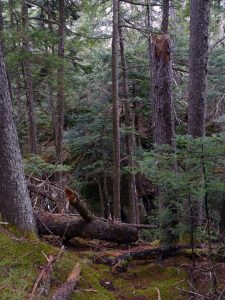But that could change. FPInnovations executive vice-president Dr. Trevor Stuthridge talks about development of “new harvesting technologies to provide the forest industry with safe, economic and sustainable solutions to access fibre located on steep slopes” as the target of a 5 year “Steep Slope Initiative” launched in 2014. “We’re looking at new innovations, such as robotic harvesting systems and techniques that allow us to tether harvesters to get them up steep slopes more effectively.”
Some of the rationale: “We spend 80 to 150 years growing a tree in Canada – some of the longest growth rates in the world. This is a significant national contribution to off-setting greenhouse gas emissions through carbon sequestration. So with all that investment in carbon stored in our forest, and all the added value potential in a tree, we need to recover the fibre at an optimum level.”
‘Wish I could figure exactly what he means by “optimum level”. He also refers to speeding up growth rate and reducing the rotation interval. See Wood Business: The future of fibre.
I wonder what Dr. Stuthridge would think if he came to Nova Scotia where we have already reduced the rotation interval from 80+ years to 20-40 years on nutrient-poor landscapes washed by acid rain. Would he say we have achieved an optimal level for recovery of fibre or do we have still further to go?
————–
More information about the Steep Slope Initiative is available in The Working Forest Vol 21 #1 See cover photo and article on page 7. Also Forestnet Digital Editions Logging and Sawmill Journal Feb 2016 pages 28-40.

